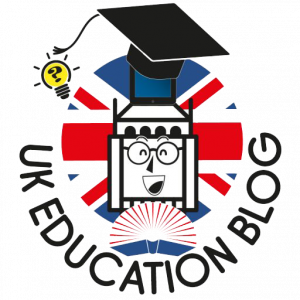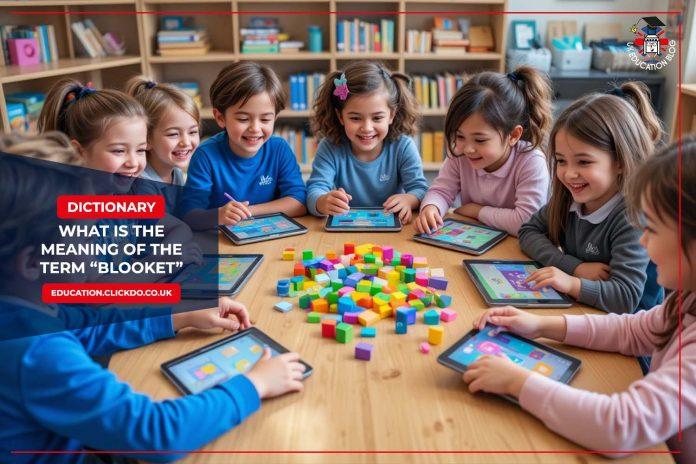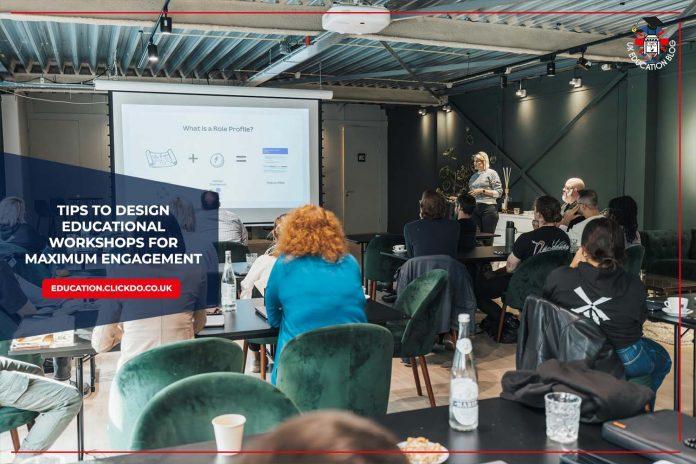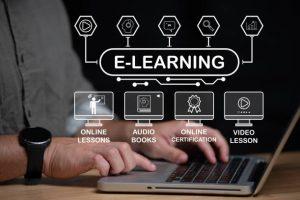Online education platforms have already grown into a full-fledged independent industry. There are various online courses and schools for any taste and topic.
Many platforms are look-alike and offer almost the same features and services, varying in cost and available tutors. So, why would you need a custom EdTech software solution, and what benefits can it offer you?
Won’t copying the successful case and proceeding from the conventional education platform be easier?
To answer these questions, we must consider some crucial aspects related to scalability issues and the demand for innovations.
Modern EdTech Software Development in a Nutshell
 Before going into the details, let’s briefly talk about two main approaches to EdTech software development at the moment.
Before going into the details, let’s briefly talk about two main approaches to EdTech software development at the moment.
Long story short, as a business owner considering creating a new online platform for education, you have two approaches:
- Create a conventional application that shares all the features and services with the existing solutions from your rivals. Thus, you will offer similar software, and your only advantage will be the quality of the tutoring or educational materials provided. Still, it might be faster and easier to go on the market.
- Invest in custom EdTech software. It will have to share some core features and functionality with the rest. Yet, you will have much more flexibility and the possibility to extend functionality. Besides, you can adapt faster to market trends and integrate new features more efficiently. Still, a custom approach usually takes more time and resources for a successful launch.
Nevertheless, custom education software development suggests the possibility of avoiding or preventing some issues that are common for conventional eLearning platforms.
Understanding Scalability Challenges in Education Platforms
 One of the most crucial challenges in the conventional EdTech software development approach is its “modularity”.
One of the most crucial challenges in the conventional EdTech software development approach is its “modularity”.
To simplify, such traditional eLearning platforms are commonly developed using third-party APIs. So, you must create a core IT infrastructure, while most services will be embodied using third-party existing services.
Such an approach is beneficial at first, yet can cause issues related to:
- Increased User Demand and Platform Performance
- Managing Expanding Content and Resources
- Integration Issues with Existing Tools and Systems
- Real-time User Interactions
Increased User Demand and Platform Performance
EdTech software development is risky when it relies on third-party services responsible for platform working processes and their efficiency.
For instance, you might save costs by migrating your IT infrastructure to the cloud. However, if you choose the wrong cloud services, it might directly impact the performance of your platform significantly if the number of your users increases rapidly or even gradually scale.
Of course, storing your servers on-premises won’t save you from DDoS attacks or similar challenges. However, nothing and no one can guarantee you 100% protection from such events. Still, a custom EdTech software development approach can offer you more options to ensure safety and seamless platform performance.
Besides, choosing custom education solutions suggests scaling your maintenance and server capacity on demand.
Managing Expanding Content and Resources
Yet another problem with more conventional eLearning platforms is the expanding content and resources.
Sometime after your software product launches, you will have to increase the variety of content offered. This will also impact on the list of required resources to support and store it. Commonly, businesses underestimate how rapidly and significantly this happens, so they don’t take such factors seriously when planning and estimating projects.
However, in terms of custom EdTech software projects, you are assisted by an EdTech development company familiar with this niche and its specifics. Therefore, they can advise you and help evaluate future challenges and issues more accurately and adequately. This includes the data storage and management approach, i.e., managing content and resources.
Integration Issues with Existing Tools and Systems
Custom eLearning development can help to avoid potential integration conflicts. In fact, many conventional app development approaches aim at modern solutions and popular APIs or SaaS services, connecting them with new platforms.
However, you must choose custom eLearning development if you have another custom-built product or require specific management tools or systems. The custom approach includes all your requirements and demands, finding ways to satisfy all your needs, and integrating other services or systems.
At the same time, conventional development might suggest sticking up with more popular and well-known alternatives to required tools because integrating them is much faster and cheaper than adjusting both software products for connectivity.
Real-time User Interactions
Finally, custom education software development offers much more efficient and advanced real-time user interaction monitoring and tracking solutions.
First, you can change your marketing or management strategy by applying new methods and solutions. Secondly, you can adjust and set tracking practices or even automate them. Thus, you will get more detailed reports and better awareness of what is happening with your platform: what results in bugs, what can be improved or fixed, what the most popular services among the users are, etc.
Key Features of Scalable Custom EdTech Software
 So, what are the key features to consider when planning a scalable custom EdTech software project? The list of such must-have options should always include:
So, what are the key features to consider when planning a scalable custom EdTech software project? The list of such must-have options should always include:
- Cloud-Based Development
- Microservices Architecture
- Automation for Administrative Tasks
- Real-Time Data and Analytics Tools
- AI-Powered Personalization
- Multi-Platform Support
This doesn’t mean you must enable each from the list from the beginning. However, you should consider their potential role in the future when your software product grows.
Cloud-Based Development
It is essential to plan a cloud-based development in advance. Even if you stay with on-premises infrastructure for a long time, it is better to know that your software product can migrate to the cloud if needed.
Otherwise, you might face many issues and challenges to overcome when your educational platform grows rapidly. Don’t forget that apart from postponing integrations, such difficulties can cause performance issues and negatively impact the user experience.
The best way to plan your future cloud development is to find a reliable tech partner who can advise you on the most suitable and satisfying solution. Yet, from our experience, AWS is far ahead of many cloud services, offering multiple advantages and benefits to their clients. However, don’t forget that they also cost more than the alternatives.
Microservices Architecture
Another popular and efficient functional solution for scalable software is microservices architecture.
Long story short, such applications work as a combination of standalone services and features. Therefore, you can change or scale each independent service without impacting others. This gives a great advantage for scaling platforms, allowing their development teams to test and improve each part of an app independently and safely.
Automation for Administrative Tasks
There are multiple ways to automate repetitive and routine tasks. For example, during custom education software development, you can use CI/CD pipelines to boost the pace of coding practices and product delivery.
However, don’t forget that you will need a DevOps specialist on board to ensure the efficiency of such operations. Additionally, you can try AI integrations and similar solutions to streamline administrative tasks such as grading, tracking, data processing, etc.
Real-Time Data and Analytics Tools
Another powerful benefit of custom eLearning development is a much more accurate and efficient data analytics tool.
First, custom approaches are tailor-suited and aim to satisfy the agreed terms and demands. So, from the beginning, they design and develop systems to meet your software specifications, regardless of how complex or complicated they might be.
Besides, integrating new or changing existing functionality is possible if your data analytics practices reshape and require new approaches or metrics. In other words, your management and analytics systems can scale and improve with the rest of the software solutions.
AI-Powered Personalization
Frankly, even conventional eLearning platforms can afford to integrate third-party AI solutions to improve content personalization or process optimization.
Nevertheless, you will still require assistance from niche-experienced developers capable of adjusting and training such integration to meet your needs. To rephrase, successful integration and AI-powered personalization will require a custom development approach.
Multi-Platform Support
Last but not least, the cross-platform nature of educational platforms can also be considered a custom software development approach. Most modern eLearning solutions are web-based.
Many of them have mobile versions as well, yet online education traditionally starts with web applications, and only after success they scale, creating mobile versions of platforms. Such development also requires a more personalized approach, defining core features and services, tech stack, as well as platforms for future applications.
The best way to make the right choice is to contact an EdTech development company for advice.
Considerations When Building a Scalable Custom EdTech Solution
 Finally, let’s briefly discuss the core needs and aspects to consider when building a scalable custom EdTech solution. Frankly, the list includes three main aspects:
Finally, let’s briefly discuss the core needs and aspects to consider when building a scalable custom EdTech solution. Frankly, the list includes three main aspects:
- Clear needs assessment
- Experienced development team
- Expertise in scalability-focused technologies
Clear Needs Assessment
First, you must plan and describe your needs and expectations. Examining the most recent industry trends and software development tendencies is the best way. Consulting with tech companies is also a preferable choice.
After learning the software suggestions, prioritize the main features or services and clarify your primary goals. Then, you can define what will be the easiest and most efficient way to meet expectations with software solutions.
Experienced Development Team
Working with experienced developers is not cheap. Nevertheless, hiring experts helps to prevent countless mistakes and errors, satisfy demands, and achieve the best software quality.
Consider it a one-time investment: instead of fixing and optimizing the product in the future and changing its infrastructure, you can simply pay professionals to take care of all aspects and deliver the demanded results, prepared for future scaling.
Expertise in Scalability-Focused Technologies
Finally, when considering a custom EdTech software solution that will work for a long time, with the possibility to scale its functionality or various metrics, you should choose scalability-focused technologies.
Once again, the best way to do so – is to find reliable developers with proven experience in software development, improvement, and scaling. These specialists can help you choose based on tech insights, skills, and knowledge.
Among the potential examples of scalability-oriented techs, we can name cloud computing, microservices infrastructure, NoSQL databases, and other non-traditional software solutions.
 One of the keyways AI voice generators change the landscape of e-learning is that these generators reduce production time and cost into appreciable fractions.
One of the keyways AI voice generators change the landscape of e-learning is that these generators reduce production time and cost into appreciable fractions. Another benefit of AI voice generators is their contribution to accessibility through e-learning content.
Another benefit of AI voice generators is their contribution to accessibility through e-learning content. AI voice generation not only replaces human voice actors but also enables new levels of interactivity in training. Imagine a virtual training session wherein learners are engaged in an interactive learning process by interacting with AI-powered characters, and actual questions from learners would elicit responses in real time using natural-sounding voices. This level of interactivity may augment engagement and retention rates significantly.
AI voice generation not only replaces human voice actors but also enables new levels of interactivity in training. Imagine a virtual training session wherein learners are engaged in an interactive learning process by interacting with AI-powered characters, and actual questions from learners would elicit responses in real time using natural-sounding voices. This level of interactivity may augment engagement and retention rates significantly.



 Pushchairs come in various styles, each designed to meet specific needs. Single pushchairs work well for families with one child or those who prefer a lighter option. However, as your family expands, you might find yourself considering a double pram. These models allow you to transport two children comfortably, whether they’re twins or siblings of different ages.
Pushchairs come in various styles, each designed to meet specific needs. Single pushchairs work well for families with one child or those who prefer a lighter option. However, as your family expands, you might find yourself considering a double pram. These models allow you to transport two children comfortably, whether they’re twins or siblings of different ages. Once you’ve chosen your ideal pushchair, here are some tips to help you use it effectively:
Once you’ve chosen your ideal pushchair, here are some tips to help you use it effectively:










 Before going into the details, let’s briefly talk about two main approaches to EdTech software development at the moment.
Before going into the details, let’s briefly talk about two main approaches to EdTech software development at the moment. One of the most crucial challenges in the conventional EdTech software development approach is its “modularity”.
One of the most crucial challenges in the conventional EdTech software development approach is its “modularity”. So, what are the key features to consider when planning a scalable custom EdTech software project? The list of such must-have options should always include:
So, what are the key features to consider when planning a scalable custom EdTech software project? The list of such must-have options should always include: Finally, let’s briefly discuss the core needs and aspects to consider when building a scalable custom
Finally, let’s briefly discuss the core needs and aspects to consider when building a scalable custom 
 Before we get into the worthiness of online MBAs, let’s look at some of the benefits and drawbacks you are likely to face.
Before we get into the worthiness of online MBAs, let’s look at some of the benefits and drawbacks you are likely to face. Choosing the right online MBA programme requires careful consideration of several factors to ensure quality education and maximise your return on investment.
Choosing the right online MBA programme requires careful consideration of several factors to ensure quality education and maximise your return on investment.
 Everything starts with the venue, from where it is to how you set it up. There are many options for event space hire London, but the one you select should resonate with your goals and audience. Beyond that, it should make attendees feel comfortable and help them focus.
Everything starts with the venue, from where it is to how you set it up. There are many options for event space hire London, but the one you select should resonate with your goals and audience. Beyond that, it should make attendees feel comfortable and help them focus. Don’t want your audience to leave prematurely or feel disengaged? You need to have a well-thought-out structure that can keep them engaged from start to finish.
Don’t want your audience to leave prematurely or feel disengaged? You need to have a well-thought-out structure that can keep them engaged from start to finish. Technology is your powerful friend when it comes to creating an engaging and effective workshop. This starts with presentation tools when you are going through topics, and you can illustrate key concepts with the use of platforms like Prezi or Canva.
Technology is your powerful friend when it comes to creating an engaging and effective workshop. This starts with presentation tools when you are going through topics, and you can illustrate key concepts with the use of platforms like Prezi or Canva.








